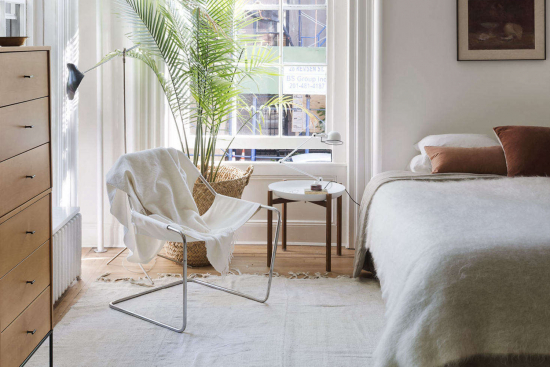Prospect & Refuge: A Spectacular Coastal Home Both Wild and Cozy
The most compelling architectural projects have a palpable sense of place. This can mean honoring a building’s original design, prioritizing integration into (as opposed to conquering of) the natural landscape, or, perhaps, acknowledging the history of the area. This new build, in a coastal town in Victoria, Australia, does it all.
Melbourne-based architectural firm Kennedy Nolan is behind the incredibly thoughtful project, dubbed the “Always House.” They were brought on to restore the dramatically sited cliffside home designed by Australian midcentury stalwarts Chancellor and Patrick, but when it became clear that it was structurally unsound—in danger of sliding to the beach below—they pivoted to building anew.
They tore down the original building, constructed a foundation of 14-meter piles, then rebuilt the home “to ‘remember’ the [former] house by largely reconstructing its form and arrangement,” says founding partner Patrick Kennedy.
The team also made sure that the new build would continue to take full advantage of the views offered by the spectacular oceanfront location, which he called “both a gift and a problem,” one that often results in single-orientation glass boxes. Their solution: orient the home both out toward the ocean and in toward a new courtyard. In addition, they would follow the “prospect and refuge” theory of design, which posits that ideal living spaces should offer opportunities to both explore (prospect) and nest (refuge). “Views are amplified by the way they are revealed; rounding a bend, passing through a gate, moving from darkness into light,” says Kennedy.
A dim, hushed interior dominated by wood and stone is a cozy counterpoint to the wild coastal landscape—not to mention an apt backdrop for the client’s collection of Indigenous art, much of it by Yolngu female artists in north-east Arnhem Land. The home is on land originally inhabited by the Bonurong people, and its name is inspired by Aboriginal land rights advocate Uncle Williams Bates’ motto: “Always Was, Always Will Be Aboriginal Land.”
Below, a tour of the Always House, a home with a profound sense of place.
Photography by Derek Swalwell, courtesy of Kennedy Nolan.











